
Dentures in Las Cruces, NM
Are you suffering from the effects of missing teeth? If you’re missing one or more teeth you may have noticed a decline in your appearance and overall health. If this is the case, we can help you achieve a beautiful, full smile with dentures.
Types of Dentures We Offer
Since each patient has different dental needs, we offer multiple different types of dentures. If you’re not sure which option is best for you, we’ll work with you to create a customized treatment plan for you.
Partial Dentures
If you’re missing one or multiple teeth, Dr. Borham may suggest partial dentures. This restoration consists of one or more dental crowns that are attached to your existing natural teeth. We’ll either attach it using metal framework, or by placing crowns over existing adjacent teeth to support the partial denture.
Full Dentures
Full dentures are a great option for those who are missing a full set of teeth. This restoration is custom fit to your mouth and secured firmly to your gums. You’ll start experiencing an improvement in your appearance and oral health after receiving this restoration option.
Both partial and full dentures are an affordable way to restore your smile, and often you can even receive these options in just one visit.
Implant Retained Dentures
If you’re looking for a more secure replacement option, talk to Dr. Borham about implant retained dentures. These removable dentures are secured to your mouth using dental implants.
First, the number of implants you need will be placed in your jawbone. Next, your removable dentures will be attached to the implants. With this option, you’ll notice your dentures fit better and are less likely to loosen over time.
Are You a Candidate for Dentures?
If you’re missing teeth for whatever reason, replacing them with dentures may be a beneficial solution. Dentures will boost your self-confidence and improve or create relationships as well.
You may also be a candidate for dentures if your teeth are severely decayed or damaged. Dr. Borham will securely attach your dentures in your mouth after extracting the damaged teeth, leaving you with an attractive smile you’ll be proud to show off.
If you’ve noticed a decline in your ability to eat your favorite foods or talk to others, dentures will improve these functions and alleviate the stress they may be causing.

Maintaining and Repairing Dentures
Since dentures are a replacement for your natural teeth, we recommend taking extra care of them, only consuming food or beverages that won’t damage them.
Cleaning your dentures regularly is also essential if you want your dentures to last for many years to come and avoid oral problems. Taking out your dentures and cleaning them with a toothbrush and toothpaste is the best way to ensure they don’t become stained or worn.
We’ll also provide a cleaning solution for you to soak your dentures in. Before you go to bed, simply take out your dentures and leave them in the solution overnight. This will ensure they’re disinfected and won’t damage your gums.
If your dentures break or become ill-fitting, contact us right away. Dr. Borham will inspect them and send them to a special lab to be fixed.
Denture Replacement
Dentures will enhance your smile, but some options might not be sufficient long term solutions for some patients. While implant-retained dentures may be beneficial for many people, others may prefer a more permanent option.
Dental implants are a permanent solution to missing teeth that are inserted directly to your jawbone to stimulate bone growth. They also provide you with more freedom and eliminate restrictions on what you can eat and drink. Dr. Borham can replace one, multiple, or even a full arch of teeth with natural-looking implants.
Frequently Asked Questions About Dentures
How much is a set of dentures?
The average cost of a set of dentures ranges from $600 to $2,000. The cost is determined on a case by case basis depending on your individual needs. For a more accurate estimate, contact our Basalt office at (970) 279-5647 to schedule a consultation.
Dr. Borham will examine your oral health, and provide you with a more precise, complete cost, based on your customized treatment plan. Insurance may cover a portion of the expense. We suggest contacting your provider prior to your consultation to get an understanding of your coverage.
We also offer financing options so you don’t have to go another day without a complete smile.
How can dental implants improve my experience with dentures?
Dental implants provide a secure base for dentures, making them more stable while performing daily functions. You’ll be able to speak and eat without worry that they’ll slip around in your mouth. You’ll also be free of any diet restrictions, so you can fully enjoy the benefits of your new smile. Ask Dr. Borham about our implant-retained dentures for more information.
How long do you have to wait to get dentures after teeth are pulled?
If you have tooth extractions, you’ll have to wait until the gums are healed which usually takes six to eight weeks. During that time, Dr. Borham can fit you for immediate dentures so you won’t have to miss a day without your smile.
My current pair of dentures are loose or ill-fitting, what are my options?
Over time dentures will become loose due to continuous wear. If you experience discomfort with your dentures, contact Dr. Borham immediately. He’ll have you come into his office so he can re-evaluate your restoration. If you prefer a more permanent solution than dentures, implants may be right for you. They are more stable and require the same maintenance as your natural teeth.
My dentures broke, how do I fix them?
Dentures are complex and should only be fixed by a professional. We recommend that you bring them into our office so we can send them to a special lab to repair them. Trying to fix them on your own could cause damage to your dentures, so be sure to contact our office immediately so we can help you repair your smile.
How do I clean my dentures? How do I remove staining?
To clean your dentures, you’ll remove your restorations and brush them with a soft-bristled toothbrush and toothpaste. You’ll also soak them in a special solution overnight to get rid of any bacteria.
To remove stains, you can either purchase a denture cleaner made to remove stains or bring them into our office to have them cleaned professionally.
Receive A Complete Smile in Las Cruces, NM
Are you ready to restore your smile and improve your appearance as well as daily functions? Dentures are natural-looking restorations that will provide you with a full smile. Contact us at 575-523-5589 to get started on your journey to a new smile.
Dental Veneers in Las Cruces, NM
Do you hide your smile due to the chips, gaps, and stains in your teeth? When we smile, we increase happiness in ourselves and others around us, which is why Dr. Borham wants to help you achieve your dream smile.
Dental veneers are used to improve the cosmetic appearance of one or more teeth. They’re thin porcelain shells made to match the exact shape and color of your natural teeth. We can also bond whiter porcelain shells to your teeth as a substitute for traditional whitening services.
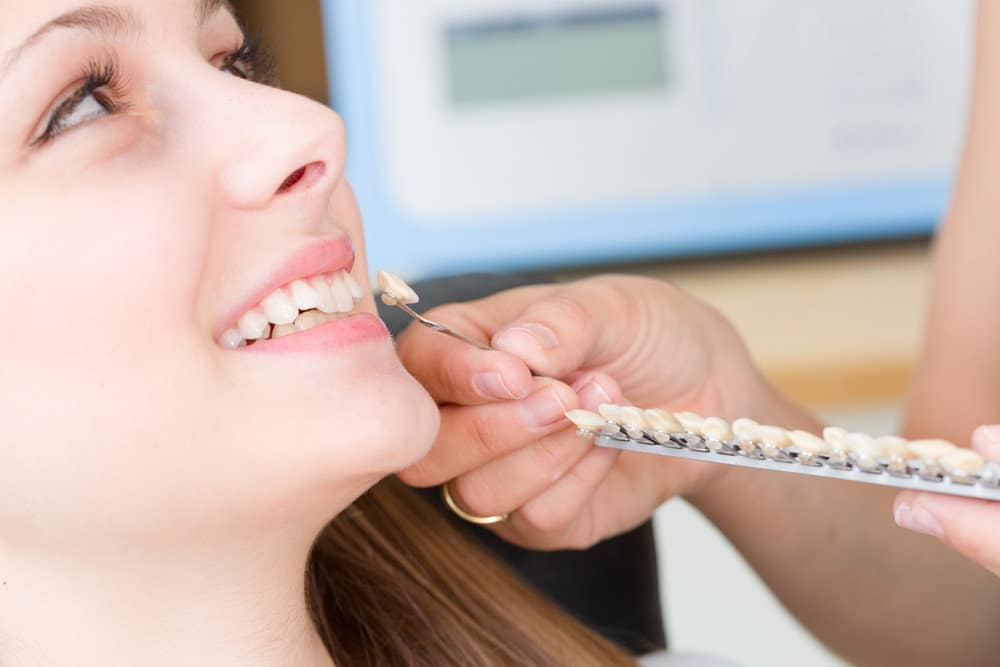
Am I a Candidate for Dental Veneers?
Dental veneers are a natural-looking way to eliminate imperfections in your smile. They blend in with your teeth so well that even celebrities such as Miley Cyrus and Ben Affleck have received this cosmetic solution to improve their smiles. However, you don’t have to be a celebrity to enjoy the benefits of veneers. They’re an affordable cosmetic option available to all our patients, especially with our convenient financing options.
Veneers may be the right solution for you if your teeth are cracked, chipped, uneven, gapped, or discolored.
The Dental Veneer Process
Choosing the right shape and shade of your new veneers is a crucial part of the process. Before you receive your veneers. Dr. Borham will use digital images and color matching tools to ensure you’re satisfied with your results.
During your procedure, your teeth will be prepped by Dr. Borham to make sure the veneers blend in seamlessly with the rest of your teeth. Since the veneer is about a half-millimeter thick, a small amount of tooth enamel must be removed so the veneer doesn’t stick out beyond your other teeth.
After your tooth is prepped, your veneer will be bonded to your existing tooth using dental cement. Once any extra cement has been removed and your teeth have been polished, you’ll leave your appointment with a beautiful, new smile.
Pros and Cons of Dental Veneers
Dental veneers can positively affect your life by giving you a smile that you’ll want to show to the world. Providing you with a healthy, appealing smile is one of our main goals at Mesilla Valley Family Dentistry and we want you to feel 100% comfortable with the services you choose. Here, we explain the pros and cons of veneers so you can decide if they’re right for you.
Pros
Veneers are long-lasting cosmetic solutions that will transform your smile. Their natural look makes it impossible for other people to tell that you’ve had dental work performed on your teeth.
Many of our patients rave about their newfound confidence after receiving the service and found that they’re more comfortable laughing and talking with others.
With dental veneers, you can receive a beautiful smile, and the process only takes a total of two appointments to complete.


Cons
While veneers last a long time, they don’t last forever. On average, they last about 15 to 20 years. However, if you do experience problems with your veneers, don’t hesitate to call and schedule a touch-up.
Veneers are less expensive than other services such as dental implants but can be more expensive than other cosmetic treatments. We do, however, work with many insurance providers and provide financing options to reduce the cost.
Frequently Asked Questions
What are porcelain veneers and how can they improve my smile?
Porcelain veneers are thin shells of tooth-shaped porcelain that are individually crafted to cover the front surfaces of your teeth. They’re very durable and won’t stain, making them a popular solution for those seeking to restore or enhance the beauty of their smile.
Veneers may be used to restore or correct the following dental conditions:
- Severely discolored or stained teeth
- Unwanted or uneven spaces
- Worn or chipped teeth
- Slight tooth crowding
- Misshapen teeth
- Teeth that are too small or large
Getting veneers usually requires two visits. They’re created from an impression (mold) of your teeth that is then sent to a professional dental laboratory where each veneer is custom-made to match the shape and color of your individual teeth.
Veneers are an excellent dental treatment that can dramatically improve your teeth and give you a natural, beautiful smile.
Is getting veneers painful?
No — Dr. Borham will apply a local anesthetic to numb your teeth and gums before the procedure, so you won’t feel any pain. You may experience some mild discomfort after your treatment, but this will should fade quickly. We also offer sedation options for patients who suffer from dental anxiety.
How long do veneers last?
Veneers can last seven to fifteen years, with proper care. Make sure to brush your teeth and floss every day, in addition to visiting your dentist at least twice a year. To help your veneers last, it’s also a good idea to avoid habits such as biting your fingernails or chewing ice cubes.
What if my veneer falls off or gets damaged?
If your veneer falls out or suffers any type of damage, don’t attempt to fix the issue on your own. Instead, call Dr. Borham right away and do your best to keep the veneer clean until he can see you.
Schedule Your Initial Consultation Today
If you’re ready to obtain a beautiful smile that will make you want to smile more, contact our office in Las Cruces, NM. Dr. Borham will evaluate your teeth and match them with a stunning set of veneers.

TMJ Treatment in Las Cruces, NM
TMJ refers to the temporomandibular joint, which is the bone structure, muscles and connective tissues that surround the jaw and control chewing. When patients experience disorders of this joint, they are said to have a temporomandibular joint disorder or TMD. Symptoms of TMD include pain and tenderness near the jaw, as well as popping or clicking in the joint when speaking or chewing.
There are many ways of treating TMJ disorders, ranging from non-invasive therapy and bite splints to injections or surgery. Left untreated, however, TMJ disorders can lead to headaches, muscle pain, malocclusion and tooth damage from grinding or clenching.
Did you know…
that TMD alone is not a disorder, but instead a collection of disorders that affect the temporomandibular joint? It is the second most common pain-causing musculoskeletal condition in the U.S. according to the U.S. National Institute of Dental and Craniofacial Research, as many as 12 percent of Americans may suffer from some type of TMD, with women twice as likely to be affected than men. But despite the prevalence and wide availability of treatment, only one out every three people with TMD fails to seek treatment.
Frequently Asked Questions
What should I expect if I undergo treatment for TMJ disorder?
TMJ disorder treatment varies from patient to patient, so it’s likely your experience may be different when compared to someone else’s. Dr. Borham may require you to adopt certain lifestyle changes to help facilitate rehabilitation in your jaw.
In some cases, you may be asked to avoid sudden jaw movements, such as yelling or yawning. Positional therapy, or sleeping on your back, can also be a preventive step to help reduce stress levels. If you’re experiencing symptoms related to TMJ disorder, schedule a consultation with Dr. Borham by calling (575) 523-5589. During the consultation, he’ll evaluate your symptoms and provide you with a customized treatment plan.
How do I know if TMD treatment is right for me?
If you’re experiencing pain associated with TMJ disorder, Dr. Borham will evaluate the extent of the condition and determine what course of treatment is best for you. Typically, the initial treatment for TMD involves conservative treatments, or a non-surgical procedure, and bite guards.
Medications may also be used to relax the jaw or relieve pain. Patients who do not respond to conservative treatments may be considered for surgery or joint injections.
Can TMJ disorder go away on its own?
Certain lifestyle changes may decrease the effects of TMJ, however, for long-lasting results, it’s best coupled with other interventions such as a bite guard or physical therapy. During your initial consultation, Dr. Borham will examine your oral health and determine the best course of action based on your needs.
What causes TMJ disorder?
There are many known causes of TMJ disorder, also referred to as TMD. Some of the possible causes include physical injury, misalignment of the teeth or jaw, stress, arthritis, clenching or grinding of the teeth during sleep, dental surgeries, poor posture, and infections.
What if I don’t seek treatment for TMD?
If left untreated, TMJ can have serious consequences that may have otherwise been avoided. You may experience joint damage and inflammation, wearing down your teeth, ear ringing, and hearing damage or loss. If you’re experiencing TMJ disorder, it’s best to put the painful symptoms to rest before they have lasting effects.
Contact our Las Cruces location by calling (575) 523-5589. One of our knowledgeable team members will be happy to answer any questions you may have.
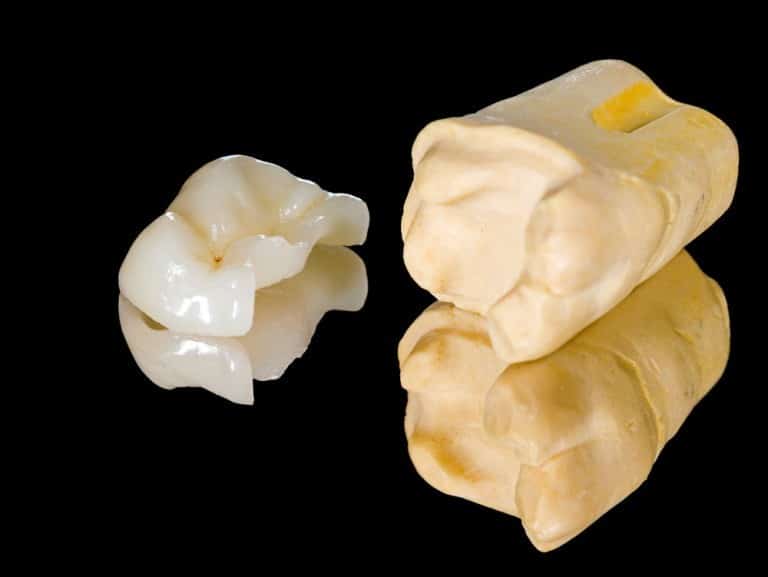
Dental Restorations: Inlays & Onlays in Las Cruces, NM
Inlays and onlays are dental restorations that are more extensive than dental fillings but less so than caps and crowns. They are typically formed in a dental lab and are made of gold, porcelain or resin depending on the patient’s needs and aesthetic goals. An inlay refers to a restoration that is formed to fit the center of a tooth, whereas an onlay refers to a restoration that encompasses at least, one cusp of the tooth. Both inlays and onlays are bonded to the surface of damaged teeth and matched to the color of the surrounding teeth.
Did you know…
that inlays and onlays can serve as alternative treatments to dental crowns when you have a broken or damaged tooth? When fillings are not enough to adequately repair a tooth, an inlay or onlay can be custom-created to fit securely onto the tooth’s surface. Depending on the materials used, the restoration can be created to appear natural and will have the same function of an organic tooth. Inlays and onlays have extremely high success rates and because they are custom made for each patient, most last longer than traditional fillings.
Frequently Asked Questions
Am I a candidate for an inlay or onlay?
You could be a candidate for an inlay or onlay in if you have moderate tooth damage or decay and are in search of an alternative restoration option to a crown or cap. Inlays and onlays are meant to look like part of your natural tooth, so they’re less noticeable than amalgam fillings.
If you’re a candidate for a dental filling, you’re likely also a candidate for an inlay or onlay. They’re not suitable for every type of tooth damage, such as cases where most of your natural tooth is missing, so your dentist will perform an examination to determine if an inlay or onlay is the best solution for you.
What should I expect when I get my inlay or onlay restoration?
Your inlay or onlay restoration will be completed over two dental appointments. First, your tooth will be prepared for treatment, and an impression will be taken to serve as a mold for your new restoration.
You may receive a temporary restoration to keep your tooth safe while your permanent restoration is created.
Once completed, you’ll return to have the temporary restoration removed and the permanent one bonded to the surface of the teeth. This doesn’t take long and you’ll soon be able to smile knowing your restoration looks completely natural.
Do I need to follow any post-treatment care guidelines?
Special care needs to be given to your teeth while temporary restorations are in place. It’s important to avoid sticky or hard foods that could cause significant damage to temporaries. Your dentist will give you detailed care instructions to follow.
Once you receive your permanent inlay or onlay, you can resume normal eating, brushing and flossing habits. It’s important to keep up with regular oral hygiene practices to keep your teeth safe and help your restoration to last as long as possible. Regular dental visits also ensure your restoration remains clean and healthy along with the rest of your smile.

Flossing is an important part of an oral hygiene routine, but research suggests that fewer than half of Americans do so daily. Flossing is simple and only takes an extra couple of minutes per day. Developing a healthy habit of flossing can prevent tooth decay and gum disease, and it may allow you to keep more of your natural teeth as you age. So what is the most effective means of flossing?
- Pull the floss taught and slide it between two teeth.
- Pull against the side of one tooth, creating a “C-shape” and sliding upwards to remove plaque build-up.
- Pull against the opposite tooth edge using the same technique.
- Repeat this process for each tooth until all inner surfaces have been flossed.
- Don’t forget to floss the backs of your molars!
Need some extra tips?
The American Dental Association recommends using a strand of floss approximately 18 inches in length. It is important to only use clean floss as you move between the teeth. One of the easiest ways of doing this is by looping each end of the floss around your fingers and beginning to floss with the area closest to one end. If you have never flossed, be sure to ask your dentist for a quick in-person tutorial at your next check-up.
Frequently Asked Questions
Should I be flossing?
Yes. The ADA recommends that everyone floss in order to prevent tooth decay and gum disease. Even if you have restorations, such as crowns or veneers, good oral hygiene is essential for prolonging their use and maintaining your oral health.
What types of results should I get from flossing?
You may not experience immediate results from flossing, but over time, your habit will pay off. Flossing can prevent tooth decay, gum disease and tooth loss – all of which can be highly inconvenient and expensive to treat. A piece of floss that costs just pennies could save you thousands of dollars later on.
Is there anything else I should be doing in addition to flossing?
Yes. In addition to flossing, you should be adopting proper brushing techniques and visiting your dentist at least twice per year for examinations and professional dental cleanings.
Crowns & Bridges in Las Cruces, NM
Dental crowns and bridges are custom-fitted tooth prosthetics that are used to replace or restore damaged or missing teeth. Crowns – also known as caps – are fixed over the surfaces of natural tooth structures or dental implants. Bridges are used to fill in the gaps left by missing teeth and are anchored in place by the natural teeth or crowns nearest the empty space. Both crowns and bridges are non-removable and must be cemented in place by a licensed dentist. Patients who get crown or bridges to restore their smiles achieve both the function and appearance of natural, healthy teeth.

Did you know…
that the Etruscan civilization were the first to use crowns as a means of restoring damaged teeth? In fact, the materials they used – ivory, gold, and bones – were still the standard in dentistry as recently as the 20th century, when porcelain crowns were first invented. Today, crowns and bridges are customized specifically for the patient’s bite and can usually be placed in as little as one or two dental visits. With proper cleaning and regular dental check-ups, crowns and bridges can last many years, or even a lifetime.
Frequently Asked Questions
Is a crown or bridge right for me?
A crown or bridge may be right for you if you have a natural tooth that’s weakened but still intact. Your natural tooth can stay in place, keeping your jaw healthy and strong. It’ll be protected by a natural-looking restoration so you won’t have to worry about it.
A dental bridge can fill a gap between your teeth consisting of one or more missing teeth. This enables you to speak and eat properly while also improving the appearance of your smile. Bridges can look completely natural, too, so you won’t have to hide your smile.
What should I expect when I have my crown or bridge placed?
Your crown or bridge will be placed in two steps. The first step includes preparing your tooth or teeth for crowns. Your tooth will have to be shaped by your dentist so the crown will fit over it and not take up too much room in your mouth.
If you’re receiving a crown, we can place it on the same day thanks to our in-office CEREC® technology. Your dentist will securely place the natural-looking crown and you’ll be good to go the very same day.
If you need a dental bridge, you’ll likely have to come back for another appointment for placement. At the end of your first visit, your dentist will place a temporary restoration that you can wear while the permanent one is being made. Once your permanent bridge is done, you’ll come back to our office to have it placed.
Do I need to follow any post-treatment care guidelines?
Yes, it’s very important to take proper care of your oral hygiene after crown or bridge placement. While your restoration is meant to protect your tooth or teeth, it can’t do that well if you don’t practice good oral hygiene.
Proper oral hygiene practices include brushing your teeth twice daily with a soft-bristled toothbrush and non-abrasive toothpaste. A gentle floss can also prevent scratches on your restoration. And of course, visiting your dentist every six months for a cleaning and checkup can make your crown or bridge last longer.
After your crown or bridge placement, you may feel some discomfort, including sensitivity to hot and cold foods or beverages. This is normal and will subside as you get used to your new restoration.
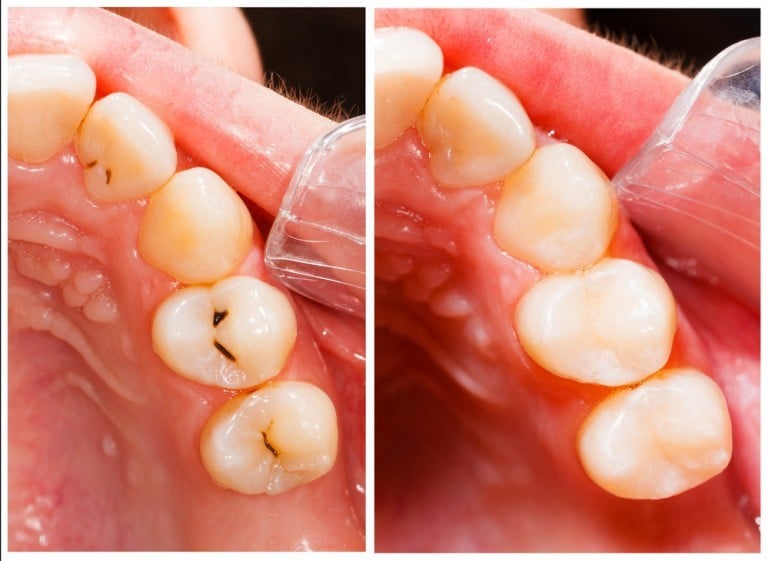
Composite Tooth-Colored Fillings in Las Cruces, NM
Composite fillings – also known as tooth-colored fillings – are dental restorations designed to be inconspicuous and natural in appearance. They blend well with the teeth and appear more natural than amalgam fillings, which are darker and more easily seen by other people.
Composite fillings are made of ceramic and plastic compounds that chemically bond to the teeth. They can be used to fill in decayed areas of the teeth, as well as to help repair chipped or broken teeth.
Most dentists use composite restorations to treat the teeth closest to the front of the mouth, as they are more noticeable when patients smile.
However, advancements in dental technology and the composition of composite fillings have made it possible for Auburn dentists to also use tooth-colored fillings on molars, which receive more wear than other teeth.
Did you know…
that composite fillings allow dentists to preserve more of the natural tooth structure? This is because composite materials chemically bond to the surface of the tooth like an adhesive. The process takes slightly longer to complete than traditional amalgam fillings, but patients can preserve more of the natural portion of the teeth while enjoying a restoration that is discreet and understated.
Frequently Asked Questions
Am I a candidate for tooth-colored fillings?
If you have a cavity, broken tooth, or a deteriorated filling, you may be a candidate for a tooth-colored filling. A filling is used to restore and protect a tooth from decay, cracks, or fractures.
Dr. Borham can examine your tooth to ensure you receive proper treatment. If you’d like to schedule a dental consultation to find out if composites are right for you, give us a call today (575) 523-5589.
What should I expect if my dentist decides a composite filling is right for me?
During your visit, your gums and teeth will be anesthetized with a local anesthetic near the site of the filling. Once the area is numb, the decayed or damaged portion of your teeth will be removed to make room for the new tooth-colored filling.
Then, resin will be placed over the area and cured with a hand-held light for less than a minute. The new filling will then be shaped and polished before the procedure is complete.
How long do composite fillings last?
Composite fillings are designed to last up to five years or more with good oral care. With a proper dental hygiene routine, your teeth will remain healthy and eliminate the risk of another decayed tooth.
When a composite filling needs to be replaced, it can be easily be done here at our Las Cruces dental office.
What type of post-treatment care is required after getting a composite filling?
Composite fillings are preserved with light at our dental office. You should be able to return to normal activity and oral care immediately after your visit.
It’s normal for treated teeth to experience some sensitivity to hot and cold in the days following treatment, but sensitivity that persists beyond a week should be reported to your dentist.
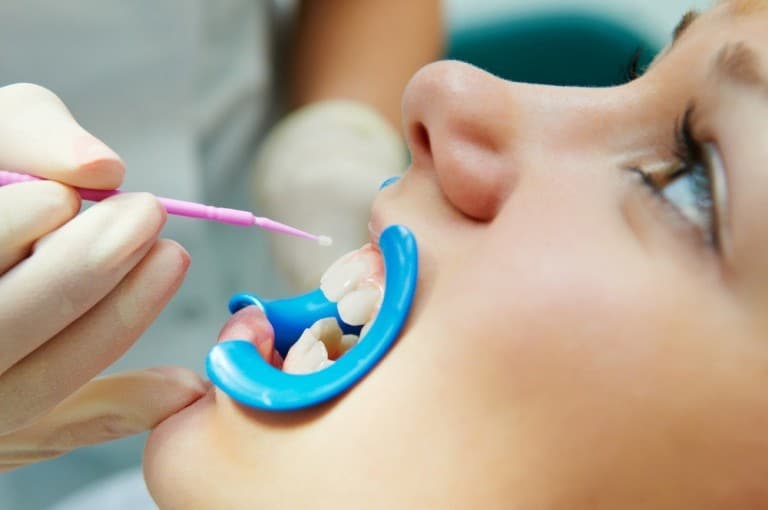
Dental Sealants in Las Cruces, NM
Dental sealants are clear coatings applied to the surfaces of a child’s molars to prevent the development of tooth decay. They work by preventing food and plaque from resting in the grooves and crevices of molars – an area especially susceptible to cavities. According to the National Institute of Dental and Craniofacial Research, nearly 1 in 3 U.S. children ages 6 to 12 currently have sealants on their teeth.
Did you know…
that sealants can last as long as 5 to 10 years pediatric dental patients? Depending on a child’s oral development and risk factors for tooth decay, sealants may be applied to the teeth as young as age 6. It is at this time that the first molars typically appear. Additional molars erupt at approximately age 12. If possible, sealants should be applied to a child’s teeth immediately after any molar has appeared to reduce the risk of early decay.
Frequently Asked Questions
What is a dental sealant?
A dental sealant is a thin plastic coating that covers and protects the chewing surfaces of molars, premolars, and any deep grooves or pits on teeth. Sealant material forms a protective, smooth barrier covering natural depressions and grooves in the teeth, making it much easier to clean and help keep these areas free of decay.
Will dental sealants affect the feel or appearance of my child’s teeth?
No, dental sealants will not affect the feel or appearance of your child’s teeth. Sealants bond directly to the teeth and harden to a clear or tooth-colored coat, mimicking the aesthetic of your child’s natural smile. It’s normal to sense new dental sealants with the tongue, but most children quickly adjust to the feeling within a few days.
What will my child experience when getting sealants?
The process of getting a dental sealant is fast and painless. Sealants are easily applied by our Las Cruces dentist or hygienist and the process only takes minutes per tooth. After the chewing surfaces are roughened with an acid solution that helps the sealant adhere to the tooth, the sealant material is “painted” onto the tooth surface, where it hardens and bonds to the teeth.
In most cases, sealants will last several years before needing to be reapplied. However, regular visits to Mesilla Valley Family Dentistry will be necessary to monitor the condition of the sealants and examine their effectiveness.
Will dental sealants prevent all cavities?
While dental sealants are extremely effective for preventing tooth decay in children, they do not replace other forms of preventative oral health care. Children should still brush at least twice a day with a fluoridated toothpaste and floss regularly.
It’s also important to schedule regular dental exams every six months, and adopt a balanced diet low in sugar to ensure optimal, long-term oral health. To learn more, give us a call at (575) 523-5589 and a knowledgeable member of our staff will answer any questions you may have.
When are sealants recommended?
Thorough brushing and flossing removes most food particles and bacteria from easy to reach tooth surfaces, but they don’t reach the deep grooves on chewing surfaces of teeth. More than 75 percent of decay begins in deep grooves, also referred to as pits and fissures. This is where dental sealants play an important role.
Who may need a dental sealant?
Dental sealants are most commonly recommended for children younger than 16 years of age to prevent tooth decay and cavities. However, sealants may also be recommended for:
- Children and teenagers – As soon as the six-year molars (the first permanent back teeth) appear or any time throughout the cavity prone years of 6-16.
- Infants – Baby teeth are occasionally sealed if the teeth have deep grooves and the child is cavity prone.
- Adults – Tooth surfaces without decay that have deep grooves or depressions that are difficult to clean.
How do I take care of my teeth after receiving a sealant?
After sealant treatment, it’s important to avoid chewing on ice cubes, hard candy, popcorn kernels, or any hard or sticky foods. Your sealants will be checked for wear and chipping at your regular dental check-up. Combined with good home care, a proper diet, and regular dental check-ups, sealants are very effective in helping prevent tooth decay. This means brushing and flossing regularly, and avoiding foods in high sugar.
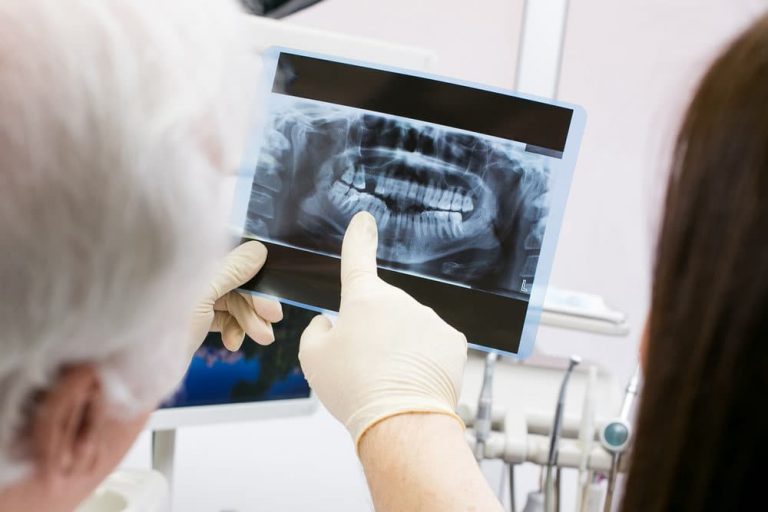
For years, dental x-rays have been used to diagnose oral health complications and detect decaying or damaged teeth. X-rays provide a unique view of the mouth that isn’t possible with a visual exam alone. When x-rays are taken, the teeth and bones absorb the majority of the ray, making them highly visible on film or on a screen. Nearly all new dental patients are x-rayed, although you may instead request that previous x-rays be transferred from another dental provider to your new dentist. By comparing your x-rays with your full mouth examination and dental history, your dentist can prescribe effective treatment and recommend a plan for preventative care.
Did you know…
that dental x-rays deliver very low levels of radiation and are considered completely safe? In fact, x-rays are even considered safe during pregnancy and while breastfeeding so long as a leaded apron and collar are used to protect your body from exposure. If you are pregnant or think you may be, tell your dentist so proper precautions can be taken.
Frequently Asked Questions
Should I get dental x-rays?
Yes. Dental x-rays are capable of identifying tooth decay and damage beneath the surface of the teeth where caries are less visible during an examination. Furthermore, x-rays provide a reference point for the progression of decay in your mouth over time. You should have x-rays taken on a regular basis, but especially if you are experiencing oral health complications or are planning to undergo a dental procedure, such as a root canal.
What should I expect when I get dental x-rays?
Getting traditional dental x-rays can take several minutes. A thick paper tab is placed into the mouth, which you will be asked to bite down on. Most patients find that dental x-rays are completely painless and do not inflict any level of discomfort. In some cases, dentists intraoral x-rays, as well as extra-oral x-rays that snap images of the face, jaw and skull. Extra-oral x-rays are typically used to identify impacted teeth, such as wisdom teeth.
What happens after my dentist has taken x-rays?
Your x-rays will be saved either on film or digitally. In the future, your dentist may request additional dental x-rays every few years to monitor the health of your teeth, gums and jaw over time. If you are considered to be high risk for oral disease or are exhibiting symptoms of complications, your dentist may prefer to take x-rays more frequently.

If you are undergoing a dental procedure or operation, you will be given a set of post-operative instructions to abide by in the hours, days, and weeks after your treatment. Following these instructions is essential to preventing infections in surgical sites, protecting restorations, and minimizing the possibility of experiencing complications. Post-operative instructions vary from procedure to procedure, but you are still sure to have some questions regarding care. Your [city] dentist will be available to answer those questions and respond to any concerns you may have.

Try to anticipate some of the questions you may have about your post-operative care and ask them prior to your treatment.
Some of the most common post-op questions include:
-
How should I manage pain following my procedure?
-
How long should I experience discomfort?
-
Do I need to follow any special dietary guidelines?
-
Is it safe for me to drink through a straw?
-
Will I be able to drive myself home after my procedure?
-
Will I need to take an antibiotic?
-
Will I need to return to your office for a follow-up appointment?
-
When will my permanent restorations be ready?
-
How do I care for my removable prosthesis?
Frequently Asked Questions
Should I talk with my dentist about the questions I have regarding my post-operative care?
Yes. Your post-operative care is contingent on you understanding everything about the recovery process and your responsibilities in caring for your surgical site.
What should I expect when I speak with my dentist?
Your dentist should allocate enough time in your consultation and pre-operative exam to listen to your concerns and answer any questions you may have. You should also be provided a phone number that you can call following your procedure to discuss any questions that may come up at that time.
Is there anything I can do to make the process easier?
Yes. Begin thinking of any questions you may have about your post-operative care, and begin writing them down. You’ll be ready to ask all of your questions when the opportunity arises without missing any important details.